The task chair is relatively easy to turn into a
design-for-the-environment trophy. Unlike a car, it doesn’t pollute or
consume natural resources once it rolls off the assembly line. Unlike
medical equipment, it’s ergonomic without requiring ingredients like
PVC to prevent it from conveying germs and disease. And unlike an
earth-friendly geothermal heat pump, it fits on a pedestal and can be
elegantly iconized. As we all know, the chair photographs well.
When Haworth launched the Zody task chair in 2005, it laid claim to the
first gold certification from McDonough Braungart Design Chemistry’s
(MBDC) Cradle to Cradle system, a kind of private green label. The Zody
is pretty much free of the kinds of persistent and carcinogenic
chemicals that tend to leach out of landfills or escape from
incinerators. It is designed for disassembly and is 98 percent
recyclable. You could take one apart with a few hand tools in about 15
minutes and toss it in a lake without affecting the water
quality—though that would be missing the point since the manufacturer
has made efforts to accommodate the reuse or recycling of the chair
when its time has come. Haworth’s competitors also rushed to gain gold
certification for their leading eco-chairs, including Steelcase’s Think
and Herman Miller’s Mirra; as a result, these three chairs are now
benchmarks of design for disassembly and environmentally friendly
composition.
But what exactly does this mean? The Cradle to Cradle certification
process forces the manufacturers’ suppliers to disclose (to MBDC) every
chemical ingredient of the components and materials that go into the
chairs—or risk being dropped by the manufacturer. This process
initiated some significant design changes. Chrome-plated bases, an old
office-chair favorite, will not be found on the Zody, Think, or Mirra,
nor will solvent-coated metals. Chrome, which uses the toxic heavy
metal hexavalent chromium, has been superseded by cast aluminum or
stainless steel, and solvents have been replaced by powder coating.
PVC—a low-cost antimicrobial but increasingly controversial plastic
used on chair arms and cable covers—is replaced by polypropylene and
thermoplastic urethane (see The Vinyl Question).
Finally, polyester, used in the mesh backs and seats, is no longer
treated with heavy doses of the heavy metal antimony, so it can be
mechanically and chemically recycled without risk. “The material
chemistry analysis at the front end means that if the product ends up
in a landfill,” says Mark Bonnema, a Haworth Design for Environment
engineer, “safety concerns are virtually eliminated.” Equally
innovative are the design-for-disassembly improvements on these
chairs.
A J-channel connects the base of the Think chair to the back, which
snaps into place with a 30-degree rotation, reducing the number of
mechanical fasteners. The Zody’s back is held to the base with one
bolt, and the Mirra’s with four: minimizing parts not only makes the
chairs easier to disassemble but makes assembly and shipping (with the
backs off) more efficient as well, reducing their carbon footprints.
(More chairs per truck.) All three manufacturers claim a disassembly
routine of between 5 and 15 minutes, calling to mind the short film
Charles and Ray Eames made of their lounge chair and ottoman being
assembled and disassembled at high speed by a man with a screwdriver,
who even had time to take a nap on the assembled chair and dream of a
beautiful assistant perched at his feet.
It is easy to be seduced by the cinematic and conceptual beauty of
disassembly, but in reality it tells only part of a more complex
problem. The true environmental cost of shipping in components from
around the world, assembling them, packaging them, and shipping them
back out around the world is hardly benign. Still, all three
manufacturers have overseas assembly plants, reducing the cost of
shipping, and all three use blankets rather than cardboard for
packaging on large domestic deliveries. Herman Miller even has a
biofuel fleet for local-area deliveries. But a life-cycle assess-ment
would certainly not put chair manufacturing up there with
community-supported agriculture. Components are shipped in and chairs
are shipped out on old-fashioned gas-guzzling trucks and boats. Jay
Bolus, vice president of technical operations at MBDC, admits that it
is a subject the system has yet to take on. “Carbon neutrality is
something Cradle to Cradle doesn’t address right now,” he says.
Each of these chairs is designed to withstand 12 years of 24-hour use,
so none of them is likely to end up in the recycling stream anytime
soon, but this distance seems to breed a little poetic license.
Steelcase’s brilliantly written brochure for Think waxes eloquently in
the conditional tense, suggesting that the materials in the chair could
end up all around you: your bath made of the recycled polyethylene
terephthalate (or PET), your hairbrush made of the recycled nylon, your
carpet made of the recycled polypropylene, and your golf clubs made of
the aluminum. So far the furniture industry has yet to provide an
infrastructure facilitating chair return and materials recovery.
Haworth boasts a take-back program of which its competitors are rather
skeptical since it requires the customer to pay to ship back the
product. Given that the infrastructure for tossing your old furniture
is well established (and free), there is little incentive beyond green
guilt for chair users to pay to return their old chairs. By comparison,
Sony, which is part of an industry with much less benign manufacturing
processes and much more difficult-to- recycle components, recently
announced that it was partnering with Waste Management to provide 175
consumer-electronics recycling drop-off centers around the United
States within a year, eventually aiming at a network with a center
within 20 miles of most residents. This cannot have escaped the notice
of the furniture-makers. “Take-back is easy to promise, hard to
implement,” says Gabe Wing, a chemical engineer on Herman Miller’s
Design for the Environment team. “I think that’s an industrywide
problem—maybe it’s even outside our industry—that we need to solve. We
use the same materials as the automotive people, as the computer
people, so what can we do collectively to set up regional recycling
facilities? That makes a lot more sense than shipping the product back
to Zeeland, Michigan, and picking up all those transportation costs.”
Currently, all three manufacturers provide information for customers
looking to off-load their old furniture, either to third-party
used-office-furniture refurbishers or for scrap. “There are recyclers
who would love to get a hold of the steel and aluminum components,”
Bonnema says, identifying the most commonly recovered chair materials.
The carpet and auto industries are using a certain amount of recovered
nylon, according to Bonnema. And in preparation, Haworth’s efforts to
reduce materials for easing disassembly resulted in 15 parts of the
Zody’s being made of the same type of nylon. Herman Miller claims to
have redesigned any part of the Mirra that took more than 15 seconds to
disassemble, having calculated the cost of disassembly versus the price
of recycled materials. (The exceptions being the tilt and hydraulic
mechanisms, which can’t be safely disassembled.) As Bolus puts it, the
strategy is on target, even if the infrastructure isn’t there yet.
“Right now it probably doesn’t make sense economically—or
environmentally, for that matter—to take all these chairs back to where
they came from, disassemble them, and recycle those parts.” But by
making the chair easy to take apart and disassembly instructions
readily available on the Web, Bolus says, the manufacturers have
provided the opportunity for other people to do the job. “I think what
we’ll see happen is that this new business of material brokers will pop
up. Folks who’ll disassemble products and recycle materials because it
makes sense economically.”
Ultimately, it is encouraging that while other industries rail against
standards set by the Environmental Protection Agency, office-furniture
manufacturers have set themselves goals that are far higher than any
federal standards. This is a reflection of both the tight
family-originated culture of the furniture businesses around the Grand
Rapids area and the kind of market they’re in. The proliferation of
“greenwashing” —unsubstantiated claims for sustainable design in a bid
to appeal to eco-conscious architects and designers—has become an
unforeseen toxic ingredient in furniture sales pitches. “Everyone has a
green story,” Bolus says. MBDC’s labeling scheme was invented at the
time when the big-three furniture manufacturers were eager for a
marketable badge to indicate that they had gone through a rigorous
testing process.
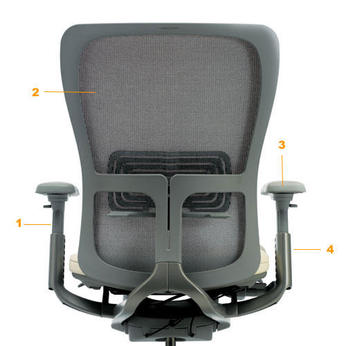
2. Polyester in Mesh Backs and Seats
3. Polypropylene and Thermoplastic Urethane
4. Cast Aluminum or Stainless Steel
No antimony, solvents, pvc or chrome
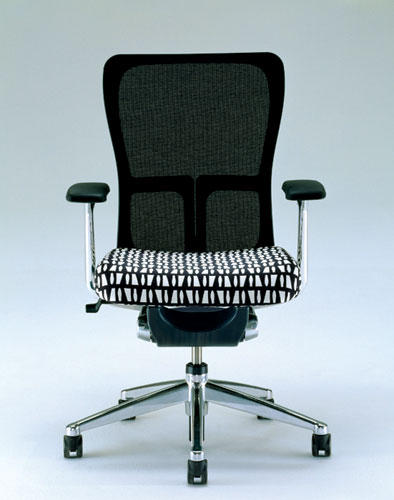
Haworth, Herman Miller, and Steel-case have worked to boost the amount of recycled materials in their chairs. Zody is 98% recyclable.
MIRRA
Herman Miller redesigned any part of the chair that took more than 15
seconds to disassemble, having calculated the cost of disassembly
versus the relative worth of the recycled materials.
Mirra is designed with a minimal number of parts for simple disassembly. The chair is 96% recyclable.
Mirra’s back is held to the base by four bolts, making the chair easier to assemble, ship, and disassemble.
THINK
Introduced by Steelcase in 2004, the chair was designed for
disassembly, so that after its useful life components can be easily
accessed, sorted, and then returned to the raw-materials stream.
THINK
Introduced by Steelcase in 2004, the chair was designed for
disassembly, so that after its useful life components can be easily
accessed, sorted, and then returned to the raw-materials stream.
In
addition to Think’s design-for-disassembly story, the chair was
committed to ergonomics: stainless-steel flexers are threaded through
its back and seat panels.

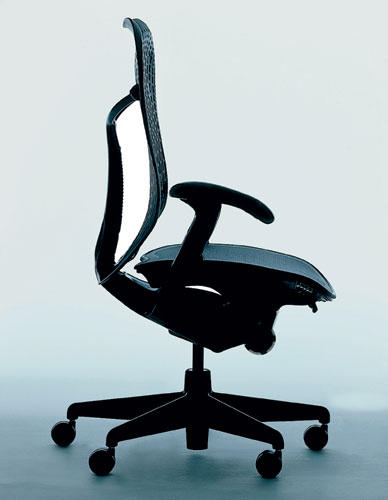
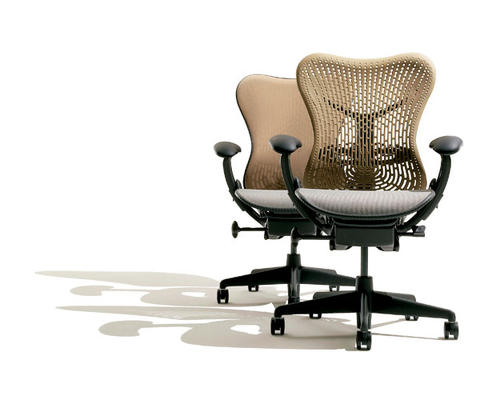

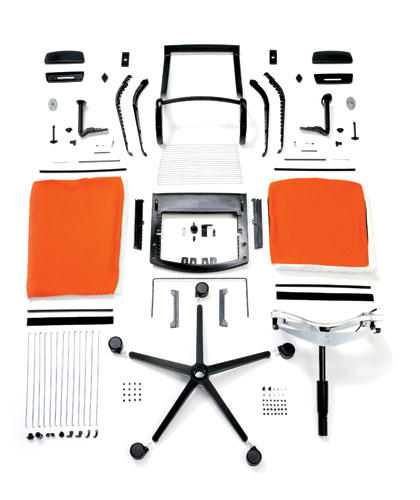
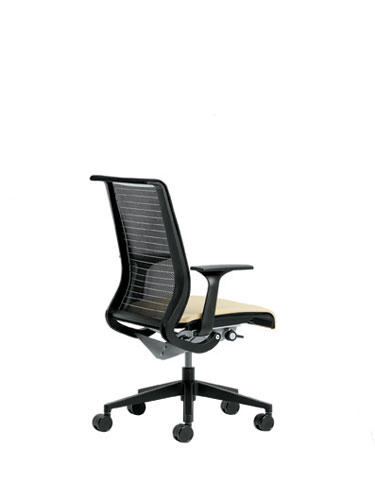
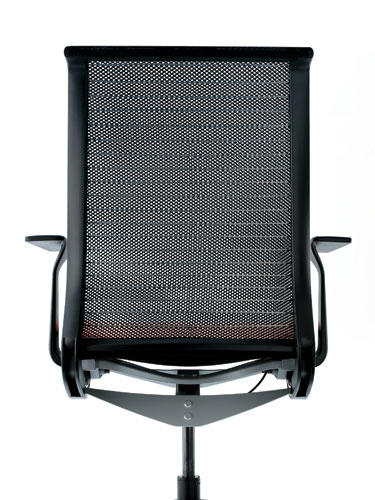


![A Tranquil Jungle House That Incorporates Japanese Ethos [Video]](https://asean2.ainewslabs.com/images/22/08/b-2ennetkmmnn_t.jpg)









